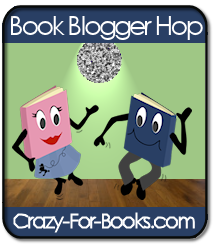.jpg) It is my great pleasure to sit down with Vivian Arend, author of Tidal Wave and Whirlpool. Let's move on to the interview!
It is my great pleasure to sit down with Vivian Arend, author of Tidal Wave and Whirlpool. Let's move on to the interview!
Clara: Why did you choose merfolk for this series?
Vivian: I had two goals when I started- one, I wanted to write about a 'different' kind of shifter than wolves or big cats, and the sea has always fascinated me. The second grew out of the first--the thought of a uniquely matriarchal society led me to investigate dolphins, and then legends of the sea.
Clara: How much research about merfolk did you need to do before writing this?
Vivian: Not too much, since I was building my own world setting. The rules I created are very much simply what I decided would work. I will admit that I used one picture for inspiration-- you can see it here on my website. I'm still looking for the name of the artist, which I lost. And this picture, with the blue glow of St. Elmo's fire, became the second scene in the first book.
Clara: Is there anything interesting about merfolk that you would like to share with us?
Vivian: I do know that some traditions consider merfolk to be selkies- skin shifters. the type that if you hide thier skin they can't change again until gaining possession of it. I wanted a more natural set up, similar to werewolves, and left those stories alone.
Clara: How long have you been writing and why did you choose paranormal romance?
Vivian: I started writing in Nov 2007 on a bit of a dare. Wrote my first erotic romance in march 2008 and was published in 2009. I write paranormal romance because I love the surprises of creating new worlds, and then the challenge of having to follow those rules! I also write contemporary--western, red-hot--the similarities between the contemp and paranormal is that they tend to be set in the wilderness, or small towns. I've got a lot of experience in both!
Clara: Do you have any favourite characters that you've written?
Vivian: I do- I love Robyn, the deaf werewolf in my first shifter book Wolf Signs. She's a no-nonsense kinda gal, and sticks up for herself. Also from that series—I love TJ, who started as a side kick younger brother, and in October he'll have his happily ever after.
In my contemps, Beth from Rocky Mountain Haven is a wonderful strong character who takes charge of her life and learns to love again, and Jack, from an upcoming release Falling, Freestyle, is just so damn sexy he makes me melt.
Clara: Which authors influenced your work or inspired you to write?
Vivian: I followed Lauren Dane to Samhain Publishing to get the complete set of her Cascadia Wolves, and that was the beginning of the adventure for me. I also really enjoy Shelley Laurenston—got kicked out of bed one night for giggling so hard I was shaking the bed.
Clara: Do you have any pointers you would like to share with authors who are just starting up?
Vivian: Hmm, top three things?
A. Write a first draft. Stop trying to make it perfect as you're writing. A finished story is far better than an edited and incomplete one.
B. Read lots—in the area you want to write. But when you start writing, follow your own instincts, not how someone else does it.
C. Have fun. While there are times you need a thick skin ie when a critique partner asks if you are insane, most of the time, this gig is supposed to make you smile.
Clara: How long does it typically take you to finish a book?
Vivian: Oh, you really don't want to know. I've been told I'm a freak. :D I write fairly quickly, but I also write all day long. So I can finish a 30K novella in two weeks. I'm under a deadline right now, so I just wrote 45K in 10 days.
On the slower side-- I write in stages now. An outline thread of what happens. A thicker 'plot' outline, and then dive into the story. A month from beginning to end on a 40K book is a nice time frame for me.
Clara: What is the best—and worst—part of writing and/or publishing that you've discovered so far?
Vivian: The best? So many good things, but the best is the readers. Getting emails and finding out people enjoyed reading something I wrote? Priceless.
The worst? At the start it's the waiting. You submit and then you wait. And wait. I now pretty much know when things will happen, so the worst part has become the paperwork details that I HATE filling out. I want to tell stories, not do paperwork!
Clara: What do you do to get rid of writer's block? 
Vivian: Ummm, not get it in the first place? I have a little note on my desk. Says 'Just tell the story'. I've been telling my kids stories for years, now I'm telling readers. I'm interested in so many things, and there is a story in everyone of them. Open your eyes, and share what you see.
.Visit Vivian on the web, on her blog, or on Twitter. Buy Tidal Wave here, buy Whirlpool here.
Thanks for showing up, everybody!
Clara.

.jpg)

